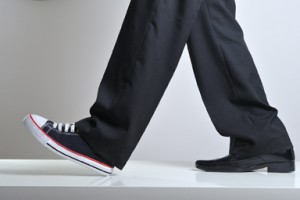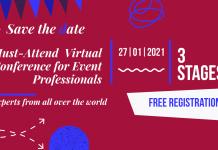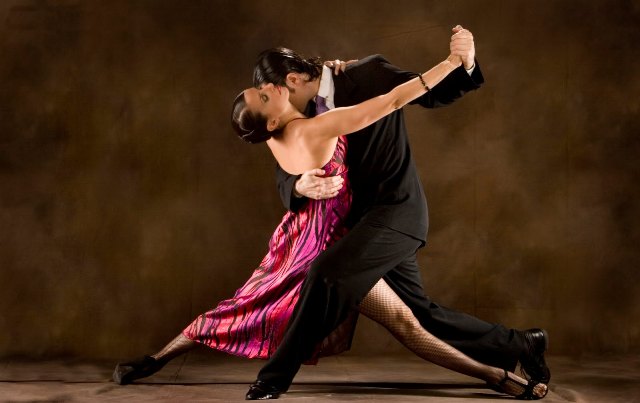 The very style of clothing that we follow is a reflection of the times we live in. In most verbal and non-verbal contacts among people the image that the participants in the given communication present is of the primary importance for the successful outcome of the established communication. A great many people try to be unique expressing themselves, attempting to be assessed by his or her individual contributions, and one’s image is exactly the way to define it. When an individual constructs one’s image, one expresses in that way how comfortable and convincing one feels in one’s own mind.
The very style of clothing that we follow is a reflection of the times we live in. In most verbal and non-verbal contacts among people the image that the participants in the given communication present is of the primary importance for the successful outcome of the established communication. A great many people try to be unique expressing themselves, attempting to be assessed by his or her individual contributions, and one’s image is exactly the way to define it. When an individual constructs one’s image, one expresses in that way how comfortable and convincing one feels in one’s own mind.
Good taste in one’s attire means that the clothes, footwear, jewellery and other ornamental details were chosen correctly for each time of the day, for any occasion or setting.
Rules for the official business dress code:
1. It is forbidden to have visible tattoos or piercings
2. Bare backs or shoulders are forbidden for female employees
3. Female neckline and gaudy jewellery are forbidden in the business world
4. Men should also refrain from wearing jewellery, particularly rings (except for wedding rings) or earrings
5. Suit is obligatory for men, disregarding the weather conditions
6. Men are obliged to wear ties
7. Women’s skirts must be a centimetre or two below knees
8. Jeans are forbidden
9. Women heels are to be 2 – 4.5 high, not more
10. Avoid garish colours
The well known saying that “Clothes do not make the man” can be safely translated in the business world as “The clothes make the man”. This rule applies to business dress code etiquette all around the world. In other words, one’s attire is still essential in constructing a successful business image. It is an established fact that the first impression is critical in creating a person’s picture, so that the choice of clothes – depending on the work post, naturally – should be in harmony with the impression a person wants to present.
The business image, among other things, is shaped by: personal appearance, professional costume, articulate, clear and successful communication, adequate behaviour in different situations, creating the impression of one’s personal confidence, by one’s personal character traits….
In most cases, opinion on a certain person is created by the first impression,  made up in only a few seconds, and it is hardly altered later on. In other words, if we leave a bad impression in the first ten or so seconds, we cannot erase it afterwards.
made up in only a few seconds, and it is hardly altered later on. In other words, if we leave a bad impression in the first ten or so seconds, we cannot erase it afterwards.
According to some research, it was proven that the first impression a person gets about us takes no more than 5 seconds, and it is primarily founded on the visual impression we leave on a person. The picture we present does not depend solely on the way we dress, even though it leaves a strong imprint, but also on the total personality – moves we make, facial expressions, hairdos, postures, affecting the other person up to 55 percent. The sound of our voice affects the perception for 38%, and words we pronounce for only 7 percent!
The first impression is surely made upon physical appearance – clothes, hairdo, posture. It was always the rule among business people in their business world: First we sell ourselves, then our company, and only in the end do we sell a product or a service. That is, by our stance and clothes we wear at the moment we send a message on our competence, and if that message is not adequate, the product we offer may be the best of all but we shall have difficulty in selling it.
Besides the established business etiquette, there are also certain ‘tricks’ with which we can show to be self-confident, starting with the introduction and greetings. Our gestures also play an important role in business communication.…
– Correct greeting starts by saying one’s name and reaching out with one’s right hand toward the other person;
– The hand grip is to be form and temperate;
– We always try not to look hunched or drooped, thus giving the impression of being an unenterprising, weary and apathetic person;
– Hands on one’s hips, crossed arms or clenched fists send a message that makes people feel uncomfortable;
– Pointing one’s finger is a sign of aggression, and playing with one’s keys in the pocket or with a ring on one’s finger is the sign of nervousness;
– After a few introductory sentences, spoken with a smile and the right amount of self-confidence, can bridge over the gap, remove uneasiness and convince one’s interlocutor, a business partner or your boss that you are the very person they are looking for….
Beside all the small tricks we use to present ourselves and the company we work for, we must also possess certain amount of moderation. As is well known, in no way should one exaggerate. Here is why:
Rulebooks introduced in banks advise the desk clerks to smile and speak in a gentle tone. An employee stated exactly according to the rules to an overdue client the amount of the monthly credit instalment, and the client, distressed about the amount and the warning, responded, “What are you sneering about?!”
„Casual” Friday
As any business expects some sort of creativity, so the employees are allowed to create their own style combining the casual with an official way of dressing. But, this form of creativity is allowed only on Fridays. A growing number of companies is introducing ‘the casual Friday’, a ‘relaxed Friday’, when it is allowed to the employees to come to work dressed more relaxed, i.e. they are permitted to make their own dress combinations for the day.
 This ‘relaxed dress code’ means mainly that the company approves only of an unofficial jacket, combining jeans with a polo shirt and jacket, trousers or jeans with a buttoned or collared T-shirt, shoes replaced with a more comfortable footwear, but not the sneakers….
This ‘relaxed dress code’ means mainly that the company approves only of an unofficial jacket, combining jeans with a polo shirt and jacket, trousers or jeans with a buttoned or collared T-shirt, shoes replaced with a more comfortable footwear, but not the sneakers….
As casual Friday slowly merged with variants for weekend clothes in many companies and businesses, however, i.e. as employees started to blend the ‘weekend attire’ with the casual style in their creativity, many companies began cancelling this practice. Standard dress code is still the reliable style to be adhered to by each employee, and the best way in which each employee represents the business.
Even though there are numerous rules for dressing, each and every culture has its own clothing style, its own business etiquette, thus sending the message on its unity, recognisability, and its affiliation, and the image of what it means by itself and what it strives to.
In France, the country where etiquette was invented, the social status of each individual, as well as his or her level of education, is assessed according to one’s appearance.
In Italy it is mandatory to wear expensive details, such as watches, neckties, shoes, bags, belts, etc.
In Germany there is a strict rule: women should avoid glamorous attire. Glittering jewellery is interpreted as a provocation. An important rule for men reads: “A gentleman always fastens his tie by himself!”
In Mexico it is very important what kind of clothes you wear. On the occasion of a formal dinner, men are expected to wear shirt and tie, and women should be clad in evening dresses.
Aborigines of northwest Pacific coast have always had complex social structure, including slaves, ‘common’ people and nobility, so that a costume serves to point out those social differences.
The Chinese are rather conservative when it comes to clothes. Women in their middle ages wear cheong-sam skirt (one-piece costume fitting the body). The male version of the costume is called changshan. In the mandarine Chinese this part of garment is known as kipao (qípáo). Beside this traditional way of dressing, men usually wear a suit with a tie. The Chinese believe that wearing inappropriate clothes may deprive them of their dignity.
The fact that the way of dressing and the style of clothes does not only depict the person wearing it, but also the company one represents, however, is also confirmed by the fact that companies around the world are gradually renouncing the compulsory business dress code for the benefit of certain savings.
So, for example, the Italian oil company ENI introduced a regulation on informal dress code, without jackets or ties. This was undertaken by the company mostly in order to save energy and conserve the living environment! Namely, if the air-conditioning devices cool less, they consume less energy and they pollute the environment less at the same time. And after they reduced the ‘artificial and unhealthy’ cooling to a minimum, the employees were allowed to cool themselves in a natural way, i.e. they are not obliged to dress heavily. This energy company was the first to introduce savings by taking the neckties off, and it is the manner of operating reviewed now by other companies as well. The Japanese come to work with no jacket or tie, too, and next after Italy is Spain where the fashion is slowly taking ground.









































 Srpski
Srpski English
English